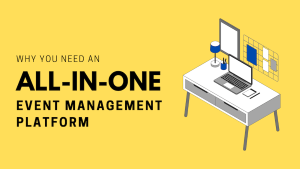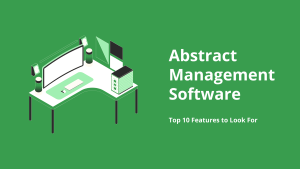
Event marketing keeps changing fast as more people move between online and offline spaces. Brands now use many digital tools to reach people and guide them toward an event. Marketing teams are utilizing email, social posts, ads, and websites together because no single channel can hold attention for long. Every channel supports the others, and this mix helps your event reach the right people at the right time.
Many teams worry that event marketing is complex, yet it becomes easier with the proper setup. Events with a solid marketing plan reach more people. More interest brings more questions and more engagement. Also, events work well in today’s digital world because they create real moments of interest. People want human contact along with digital connections, and events give them that blend. A good multi-channel strategy supports your event from the first invite to the last reminder.
This blog walks you through how multi-channel event marketing works and shows simple steps you can use to build a strategy that feels clear, steady, and easy to follow.
What Is Multi-Channel Event Marketing
Multi-channel event marketing means sharing your event via multiple channels at once. You can use email, social media, your website, ads, and offline spaces to reach potential attendees. Each channel creates an opportunity for someone to find your event, and this helps more people notice your event with ease.
People discover events in many different ways. With multi-channel marketing, you can reach them where they prefer. For example, some check their email every morning. Others browse social media throughout their workday. Some search online when they need quick answers. When your event message appears on all these platforms, the message lands easily, and this steady flow encourages them to join without second thoughts.
Types of Event Marketing
Event marketing reaches people in many ways throughout the day. A mix of all helps the event stay familiar. A person may have seen the event message once prior. Later, they see it again. Soon, the event becomes familiar and easy to remember. What’s more, small touches, including photos, videos, and logos, help people trust what they see.
Email Marketing
Email marketing is a key feature for your marketing plans. People open emails while taking a break, and that pause helps them absorb your message. If you have not started using an email tool yet, get on that. Keep each email short, and do not overdo it. A warm note or a brief update about your event keeps the message in their mind.
Social Media Marketing
Social media marketing is one of the best ways to promote your event at no cost. People scroll fast, yet they stop when something feels relevant. A short clip, a post, or a quick reminder keeps the event in view. No matter how great your event is, it needs small nudges like these to stay alive in a fast feed. Your outreach grows with platforms such as LinkedIn, Facebook, Instagram, and X.
Content Marketing
Content marketing tools like blogs, guides, or speaker stories give people a reason to learn more about your event. This will create a sense of openness among attendees and make them more likely to register, as your content marketing efforts already educate them.
Search Marketing
Search marketing meets people at the right time. They look for an event, type what they need, and your event shows up. At this point, the search marketing effort is a natural fit for the attendee, making it less like an advertisement.
Partner Marketing
Partner marketing adds credibility and trust. When an organization has already followed a specific group that shares the event, attendees feel comfortable registering because it comes from someone they know.
Offline Marketing
In today’s digital world, offline marketing is still a viable marketing method for events. A poster in a hall or a card on a desk builds a visual reminder of your event. When they see your event again online, it feels familiar.
The Core Steps to Build Your Multi-Channel Event Marketing Plan
Step 1: Know Your Audience
Your plan begins with a clear picture of who you want to reach. Once you know your target audience, it will be much easier to shape your content. It helps you avoid wasted effort by ensuring your message reaches the right groups.
Event teams typically look at the overall details before moving forward with an audience review. These details help you understand what each group prefers. An initial audience scan gives you a strong start because you focus on the people who benefit most from your event.
Audience details to check:
-
- Age group
- Job role
- Field or area of study
- Preferred platform
- The type of content they open first
Step 2: Pick the Right Channels
Each channel reaches your audience differently. For example, email gives direct updates to attendees. Social media spreads quick reminders about your event. A search engine optimization (SEO) strategy helps people find you while searching for events. SMS reaches those who prefer short alerts. Your communities and partners help promote the event and expand your reach to target groups.
Leveraging multiple channels in a successful marketing plan is crucial, but each channel must have a clear purpose. You must choose a channel to reach potential attendees, not because it seems popular. When each channel plays a role in your marketing strategy, your entire plan feels easy to manage.
Channel options:
-
- Email updates
- Social posts
- SEO pages
- SMS notices
- Community spaces
- Partner networks
Step 3: Build a Timeline
A timeline helps you control your full plan. You can decide when to start, when to send reminders, and when to push your main updates. A planned timeline supports each channel the right way. Some people open emails more often. Others see social content first. A timeline lets you reach all groups without overload.
Step 4: Create Simple and Clear Content
Your content shapes the impression people have of your event. Clean, easy-to-understand messages help them understand the purpose quickly. Short posts work well on social media feeds, while clean visuals and layout help the key ideas stand out. When people understand your event in the first few seconds, they often stay longer and register.
Avoid long phrases or excessive detail. You need direct points that tell people what they gain from attending.
Format ideas
-
- Short posts
- Simple videos
- Clean graphics
- One-page event info
- Small highlight blocks
Step 5: Use Data to Improve Reach
Analyzing data will help you see how people are responding to your content. For example, open rates tell you whether your subject line was effective. Click rates will give you an idea about the type of link that works. And sign-up rates will let you know which channel has generated tangible results.
Data gives you a simple view of what works and what needs to change. When you study your numbers often, your campaign gets stronger each week. A small review after each stage helps you adjust your plan accordingly.
Step 6: Support Mobile Audience
A mobile-friendly event plan allows your target audience to receive your message with ease. The less information you put on a page, the faster it will load. The cleaner the images and graphics you use, the better they will display when viewed on a smaller screen. When your updates work smoothly on mobile, more people will have a clear understanding of your event.
Mobile apps let you reach a broader audience as well. People check their phones at work, in labs, and between tasks. With mobile-friendly messaging, you can bring your event into the gaps of those moments.
Step 7: Add Retargeting or Follow-Up Content
Some people show interest but forget to register. Retargeting solves this. Small reminders help them return to your page. A follow-up message answers questions they have not yet asked. A short update brings their attention back to the event.
The follow-up content is also helpful in increasing the level of visitor engagement. People often need two or three touch bases before they act. A follow-up message helps them finish that last step.
How Dryfta Supports Multi-Channel Event Marketing
Dryfta’s marketing tool, also known as Eventboost, is a one-stop shop for planning, sharing, and promoting your message across many channels. The platform keeps each step simple. It also helps you stay consistent because all tools remain in one place. Organizers get precise control over emails, pages, tracking, and community features. This makes it easier to reach more people without switching between different tools.
Dryfta supports your plan through:
-
- Email campaigns: Send updates, reminders, and invites straight from your dashboard.
- Clean registration pages: Share clear event details and collect sign-ups without confusion.
- Built-in analytics: Track views, clicks, and sign-ups to understand what works.
- Community tools: Create spaces where people can talk, share ideas, and stay up to date.
Final Thoughts
The foundation of effective event marketing relies heavily on strategic planning, consistent execution, and clear messaging across multiple channels, as these help create a quick understanding of what your event is about. A structured approach from the initial public announcement through the final public reminder creates a smooth and logical sequence of communication for the audience. Clear messages, simple design, and thoughtful timing help people trust your updates and engage with each stage.
Dryfta supports this flow by giving you one place to manage pages, emails, and sign-ups. The platform keeps event tasks organized, so your team works with less pressure and more control.




